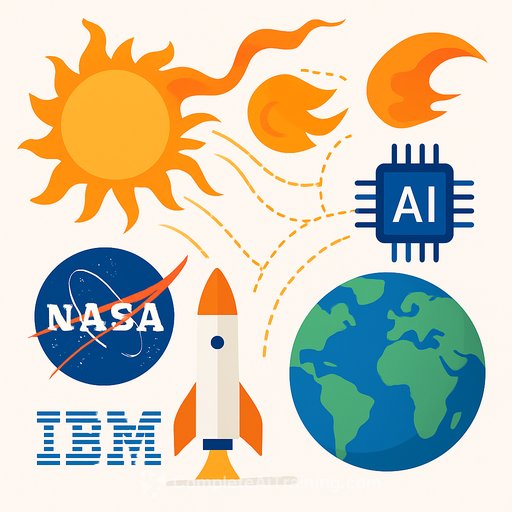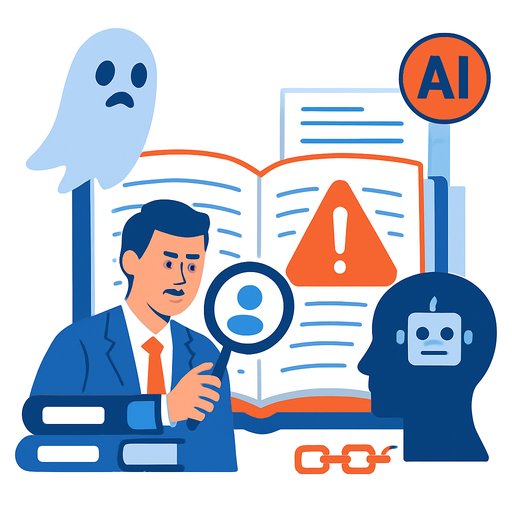NASA, in collaboration with IBM, has introduced Surya, an advanced AI model that improves predictions of solar flares and eruptions. Trained on nine years of data from NASA’s Solar Dynamics Observatory (SDO), Surya delivers visual forecasts up to two hours ahead with a 16% higher accuracy than traditional methods. This capability is crucial for protecting satellites, communication networks, and power grids from the disruptive effects of space weather.
Why Solar Storm Forecasting Matters
Solar flares and coronal mass ejections (CMEs) release charged particles and magnetic energy that can interfere with technologies on Earth and in space. These space weather events can:
- Disrupt satellites: Affecting communication, navigation, and weather monitoring systems.
- Cause power outages: Geomagnetic storms may overload electrical grids, leading to blackouts.
- Endanger astronauts: Increased solar radiation poses health risks for crews aboard the ISS and future missions.
- Interrupt aviation and GPS: Impacting flight routes and GPS-dependent services globally.
Accurate forecasting is essential to mitigate these risks and maintain technological infrastructure.
Surya: AI-Powered Solar Weather Forecasting
Surya, developed with IBM’s support, is built on machine learning algorithms trained with extensive solar data. Unlike conventional models, it processes large datasets from solar observatories and satellites to identify subtle signs of solar activity. This enables faster, more precise predictions of solar eruptions, providing critical lead time for preventive measures.
Leveraging Solar Dynamics Observatory Data
- High-resolution imaging: SDO captures solar images every 12 seconds across various wavelengths, offering detailed views of solar conditions.
- Magnetic field monitoring: Continuous measurements of solar magnetic activity, the main driver of solar storms.
- Long-term dataset: Over 15 years of uninterrupted observations covering a full solar cycle, providing consistent and rich training data.
This comprehensive dataset allows Surya to detect early instability on the Sun’s surface, improving forecast reliability.
Performance Gains with AI Forecasting
Initial evaluations demonstrate Surya’s advantages over existing solar weather models:
- Extended forecast lead time: Visual solar storm predictions up to two hours in advance.
- Increased accuracy: Approximately 16% improvement in predictive performance.
- Dynamic visualizations: Enhanced interpretability for researchers and operators managing space weather impacts.
Even small increases in warning time can be vital for protecting satellites and adjusting power grid operations to avoid cascading failures.
Open-Source Model for Global Research
NASA has made Surya publicly available to encourage worldwide collaboration in space weather research:
- The AI model is accessible via Hugging Face for experimentation and forecasting.
- Source code and tools are hosted on GitHub, enabling adaptation and further development.
This open approach supports innovation across scientific and industrial sectors and fosters partnerships among government, academia, and industry.
Broader Impact of Space Weather Forecasting
Reliable solar storm forecasts have implications beyond space science:
- Defense and security: Military systems rely on uninterrupted satellite communications.
- Economic stability: Stock markets, airlines, and internet services depend on consistent connectivity.
- Human spaceflight: Radiation monitoring is critical for upcoming lunar missions and future crewed Mars exploration.
Advancing heliophysics forecasting is becoming as essential as terrestrial weather prediction for daily life and infrastructure protection.
Looking Ahead
NASA views Surya as the next step in data-driven heliophysics. Kevin Murphy, NASA’s Chief Science Data Officer, emphasized embedding scientific expertise into AI models to deepen insight into solar impacts on Earth’s systems. Joseph Westlake, Director of NASA’s Heliophysics Division, likened space weather forecasting to meteorology’s role in Earth weather prediction, underlining Surya’s importance in safeguarding astronauts, spacecraft, power grids, and GPS services.
For professionals interested in AI applications and space science, exploring AI course offerings can provide valuable skills to contribute to advancements like Surya. Resources are available at Complete AI Training.
Your membership also unlocks:






